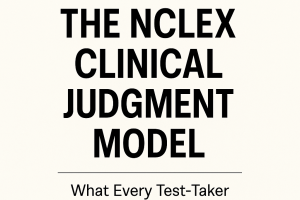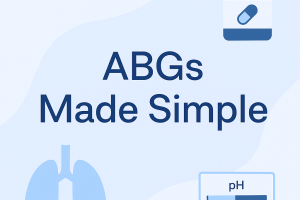3 Main Types of Transfusion Reactions and Their Symptoms

Blood transfusions save lives, but they’re not without risk. As a nurse, it’s vital to understand the different types of transfusion reactions, how to recognize them early, and what interventions are needed.
Whether you’re preparing for the NCLEX or stepping into clinical practice, this guide will walk you through the three main types of transfusion reactions you must know — and the hallmark symptoms that come with them.
1. Hemolytic Transfusion Reaction (Acute Hemolytic Reaction)
What It Is:
A hemolytic transfusion reaction occurs when the recipient’s immune system attacks and destroys donor red blood cells. This happens due to ABO incompatibility, and it’s one of the most dangerous transfusion reactions.
Why It Happens:
- The donor blood type is not compatible with the recipient’s.
- The recipient has antibodies that destroy the transfused red blood cells.
Onset:
- Usually within minutes of starting the transfusion.
Key Symptoms:
- Fever and chills
- Back or flank pain
- Hypotension (low blood pressure)
- Tachycardia
- Chest tightness or pain
- Dark, tea-colored urine (hemoglobinuria)
- Shortness of breath
- Shock
- DIC (disseminated intravascular coagulation) in severe cases
Nursing Actions:
- Stop the transfusion immediately.
- Maintain IV line with normal saline.
- Notify the provider and blood bank.
- Monitor vital signs and urine output.
- Prepare for emergency interventions (may need vasopressors, fluids, etc.).
2. Febrile Non-Hemolytic Transfusion Reaction
What It Is:
This is the most common type of transfusion reaction. It’s usually not life-threatening, but still needs prompt response. It results from the recipient’s antibodies reacting to donor white blood cells or cytokines.
Why It Happens:
- Sensitivity to donor WBCs or platelets.
- Common in patients who’ve had multiple transfusions.
Onset:
- Typically within 1–6 hours after the transfusion begins.
Key Symptoms:
- Sudden fever (usually 1°C or more above baseline)
- Chills or rigors
- Headache
- Flushing
- Anxiety
- Mild dyspnea
Nursing Actions:
- Stop the transfusion.
- Notify the provider.
- Administer antipyretics (like acetaminophen) as ordered.
- Monitor patient for progression to more serious reactions.
- May need leukocyte-reduced blood products in the future.
3. Allergic Transfusion Reaction
What It Is:
This occurs when the recipient reacts to plasma proteins in the donor’s blood. It ranges from mild to severe (like anaphylaxis).
Why It Happens:
- The recipient has hypersensitivity to donor plasma proteins.
Onset:
- Usually within the first 15–30 minutes of the transfusion.
Key Symptoms (Mild):
- Itching
- Hives (urticaria)
- Rash
- Flushing
Severe Symptoms (Anaphylactic):
- Shortness of breath
- Bronchospasm
- Wheezing
- Angioedema
- Hypotension
- Loss of consciousness
Nursing Actions (Mild Reaction):
- Stop transfusion temporarily.
- Administer antihistamines like diphenhydramine.
- Restart transfusion if symptoms resolve and provider approves.
Nursing Actions (Severe Reaction):
- Stop transfusion immediately.
- Administer epinephrine, corticosteroids, and oxygen as ordered.
- Notify provider and emergency team.
- Monitor airway, breathing, and circulation.
Quick Comparison Table:
| Reaction Type | Onset | Key Symptoms | Nursing Priority |
|---|---|---|---|
| Hemolytic | Within minutes | Fever, back pain, hypotension, dark urine | Stop transfusion, maintain IV, notify provider |
| Febrile Non-Hemolytic | 1–6 hours | Fever, chills, headache | Stop transfusion, antipyretics, notify provider |
| Allergic (Mild to Severe) | 15–30 minutes | Rash, itching, dyspnea, wheezing | Antihistamines (mild), epinephrine (severe), stop transfusion |
How to Prepare for These on the NCLEX
- Know when to stop the transfusion and what to do next.
- Understand which symptoms are normal vs. dangerous.
- Be ready for questions using terms like “priority”, “first action”, or “most concerning symptom”.
Final Thoughts
Transfusion reactions are rare but critical. As a nurse, early recognition and fast intervention can be life-saving. For NCLEX prep, focus on:
- Knowing the differences in symptoms between reaction types.
- Understanding nursing interventions.
- Recognizing which reactions are life-threatening.
The more you practice, the more these patterns become second nature.






